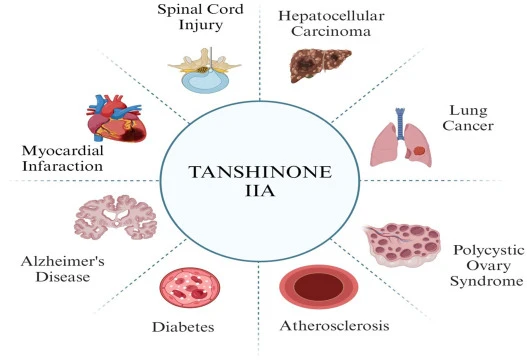Beneficis del betacarotè per a la salut El betacarotè és un compost potent que juga un paper crucial en el nostre benestar general. Aquest pigment vibrant no només dóna a les fruites i verdures els seus colors brillants, sinó que també proporciona nombrosos beneficis per a la salut. En aquest article, explorarem què és el betacarotè, els seus beneficis per a diversos aspectes de la salut i com el podeu incorporar a la vostra dieta. El betacarotè és un tipus de carotenoide, un pigment que es troba a les plantes i que els dóna els seus tons vermells, taronges i grocs. És un precursor de la vitamina A, és a dir, que els nostres cossos poden convertir el betacarotè en vitamina A, un nutrient essencial per a diverses funcions corporals. Però, què fa exactament el betacarotè per nosaltres? Els carotenoides són una gran família de pigments naturals, amb més de 600 tipus identificats a la natura. Són responsables dels colors vius de moltes fruites i verdures i són essencials per a la fotosíntesi de les plantes. En els humans, els carotenoides com el betacarotè tenen un paper en la defensa antioxidant, protegint les cèl·lules dels danys. La conversió de betacarotè en vitamina A és un procés important per mantenir una bona salut. La vitamina A és crucial per a la visió, la funció immunitària i la comunicació cel·lular. El cos regula aquesta conversió de manera eficient, garantint un subministrament equilibrat de vitamina A segons les necessitats del cos. Tot i que el betacarotè és un precursor de la vitamina A, es diferencia dels suplements de vitamina A derivats de fonts animals. El betacarotè es considera una opció més segura, ja que no s'acumula al cos fins a nivells tòxics. Això el converteix en una opció preferible per a aquells que busquen augmentar la seva ingesta de vitamina A sense risc de toxicitat. Un dels principals beneficis del betacarotè és la seva capacitat per donar suport al sistema immunitari. Un sistema immunitari fort és essencial per combatre infeccions i malalties. El betacarotè ajuda a produir glòbuls blancs, que tenen un paper fonamental en la defensa del cos contra els patògens. El betacarotè millora la resposta immunitària estimulant la producció de limfòcits, un tipus de glòbul blanc que és integral per als mecanismes de defensa del cos. Aquest augment de la funció immunitària ajuda el cos a combatre les infeccions de manera més eficaç, reduint la gravetat i la durada de les malalties. A part del suport immunitari, el betacarotè és conegut per les seves propietats antioxidants. Els antioxidants ajuden a neutralitzar els radicals lliures, molècules inestables que poden causar danys cel·lulars. Aquesta acció protectora pot reduir el risc de malalties cròniques, com ara malalties del cor i càncer, prevenint l'estrès oxidatiu al cos. La inflamació crònica és un precursor de molts problemes de salut, incloses les malalties autoimmunitàries i els trastorns cardiovasculars. Les propietats antiinflamatòries del betacarotè ajuden a reduir la inflamació al cos, promovent la salut general i prevenint l'aparició d'afeccions relacionades amb la inflamació. El betacarotè és particularment beneficiós per a la salut ocular. Es converteix en vitamina A, que és vital per mantenir una bona visió. La vitamina A ajuda a formar un pigment anomenat rodopsina a la retina, que ens permet veure en condicions de poca llum. Una deficiència de vitamina A pot provocar ceguesa nocturna i altres problemes de visió. La degeneració macular associada a l'edat (DMAE) és una causa comuna de pèrdua de visió en adults grans. El betacarotè, com a font de vitamina A, ajuda a protegir la retina del dany oxidatiu, reduint el risc de DMAE i preservant la vista a mesura que envellim. La ceguesa nocturna sovint és un signe precoç de deficiència de vitamina A. En garantir una ingesta adequada de betacarotè, les persones poden donar suport a la seva visió nocturna, millorant la seva capacitat de veure clarament en condicions de poca llum i prevenint complicacions associades a una mala visió nocturna. A més de prevenir afeccions oculars específiques, el betacarotè contribueix a la salut ocular general. Les seves propietats antioxidants ajuden a protegir les delicades estructures de l'ull dels danys causats per la llum UV i els contaminants ambientals, mantenint una funció ocular òptima. Us pregunteu què fa el betacarotè per la pell? És àmpliament conegut pel seu paper en el manteniment d'una pell sana. Les propietats antioxidants del betacarotè protegeixen la pell dels danys causats pels raigs UV i la contaminació. També ajuda a la reparació i el creixement dels teixits de la pell, promovent una complexió radiant i juvenil. El betacarotè ajuda a protegir la pell dels raigs ultraviolats (UV) nocius. En neutralitzar els radicals lliures generats per l'exposició als UV, prevé les cremades solars i redueix el risc de danys a la pell a llarg termini, com ara l'envelliment prematur i el càncer de pell. La capacitat del betacarotè per promoure el creixement i la reparació cel·lular és beneficiosa per mantenir una barrera cutània sana. Ajuda a curar les ferides i regenerar els teixits de la pell, convertint-lo en un nutrient eficaç per gestionar lesions i cicatrius de la pell. El betacarotè pot ser beneficiós per a persones amb afeccions de la pell com l'acne o la psoriasi. Les seves propietats antiinflamatòries ajuden a calmar la pell irritada, mentre que la seva capacitat per promoure el creixement cel·lular ajuda a la curació. La ingesta regular pot millorar l'aspecte i la salut de la pell afectada per aquestes afeccions. Un altre aspecte de la salut on el betacarotè juga un paper important és la funció hepàtica. Aleshores, és bo el betacarotè per al fetge? Sí, ho és. El betacarotè ajuda a protegir el fetge de l'estrès oxidatiu i afavoreix la seva capacitat de desintoxicar el cos. Un fetge sa és essencial per processar els nutrients i eliminar toxines. El fetge és el principal òrgan de desintoxicació del cos, i el betacarotè ajuda en aquest procés. En reduir l'estrès oxidatiu, ajuda a mantenir la capacitat del fetge per filtrar toxines i productes de rebuig, mantenint el cos net i saludable. L'estrès oxidatiu pot provocar danys al fetge i comprometre la seva funció. Les propietats antioxidants del betacarotè ajuden a prevenir aquest dany, reduint el risc de malalties relacionades amb el fetge com l'esteatosi hepàtica i la cirrosi. Un fetge que funcioni bé és crucial per metabolitzar els nutrients de manera eficaç. En donar suport a la salut del fetge, el betacarotè garanteix que el cos pugui absorbir i utilitzar els nutrients essencials, mantenint la salut i la vitalitat generals. Ara que entenem els beneficis del betacarotè, vegem com el podem obtenir de la nostra dieta. El betacarotè és abundant en diverses fruites i verdures. Algunes de les millors fonts de betacarotè inclouen: La incorporació d'aquests aliments a la vostra dieta pot proporcionar una quantitat substancial de betacarotè, contribuint a una millor salut. Per maximitzar la ingesta de betacarotè, considereu mètodes de cocció que preservin el seu valor nutricional. Coure al vapor lleuger o saltejar pot millorar la biodisponibilitat del betacarotè, facilitant-ne l'absorció per al cos. Combinar aquests aliments amb greixos saludables, com l'oli d'oliva o l'alvocat, pot augmentar encara més l'absorció. Per a aquells que tenen dificultats per obtenir prou betacarotè de la seva dieta, hi ha suplements disponibles. Els suplements de betacarotè poden ser una manera convenient de garantir una ingesta adequada, especialment per a persones amb restriccions dietètiques específiques. Tanmateix, és important consultar un professional de la salut abans de començar qualsevol règim de suplements. A l'hora de seleccionar un suplement de betacarotè, busqueu la qualitat i la puresa. Opteu per productes de marques de renom que se sotmetin a proves de tercers per garantir que compleixen els estàndards de seguretat i eficàcia. Comprendre la dosi adequada també és crucial per evitar possibles efectes secundaris. El betacarotè és un nutrient crucial que ofereix una àmplia gamma de beneficis per a la salut. Des del suport al sistema immunitari fins a la promoció d'una visió i una pell saludables, el seu impacte en el nostre benestar és significatiu. Si inclueu aliments rics en betacarotè a la vostra dieta o considereu suplements si cal, podeu aprofitar tot el seu potencial per afavorir un estil de vida saludable. Recordeu, l'equilibri és clau. Tot i que el betacarotè és beneficiós, és important consumir-lo com a part d'una dieta variada i equilibrada per garantir beneficis òptims per a la salut. Un enfocament holístic de la nutrició, que incorpori una àmplia gamma de vitamines i minerals, és essencial per mantenir la salut general i prevenir deficiències nutricionals.


